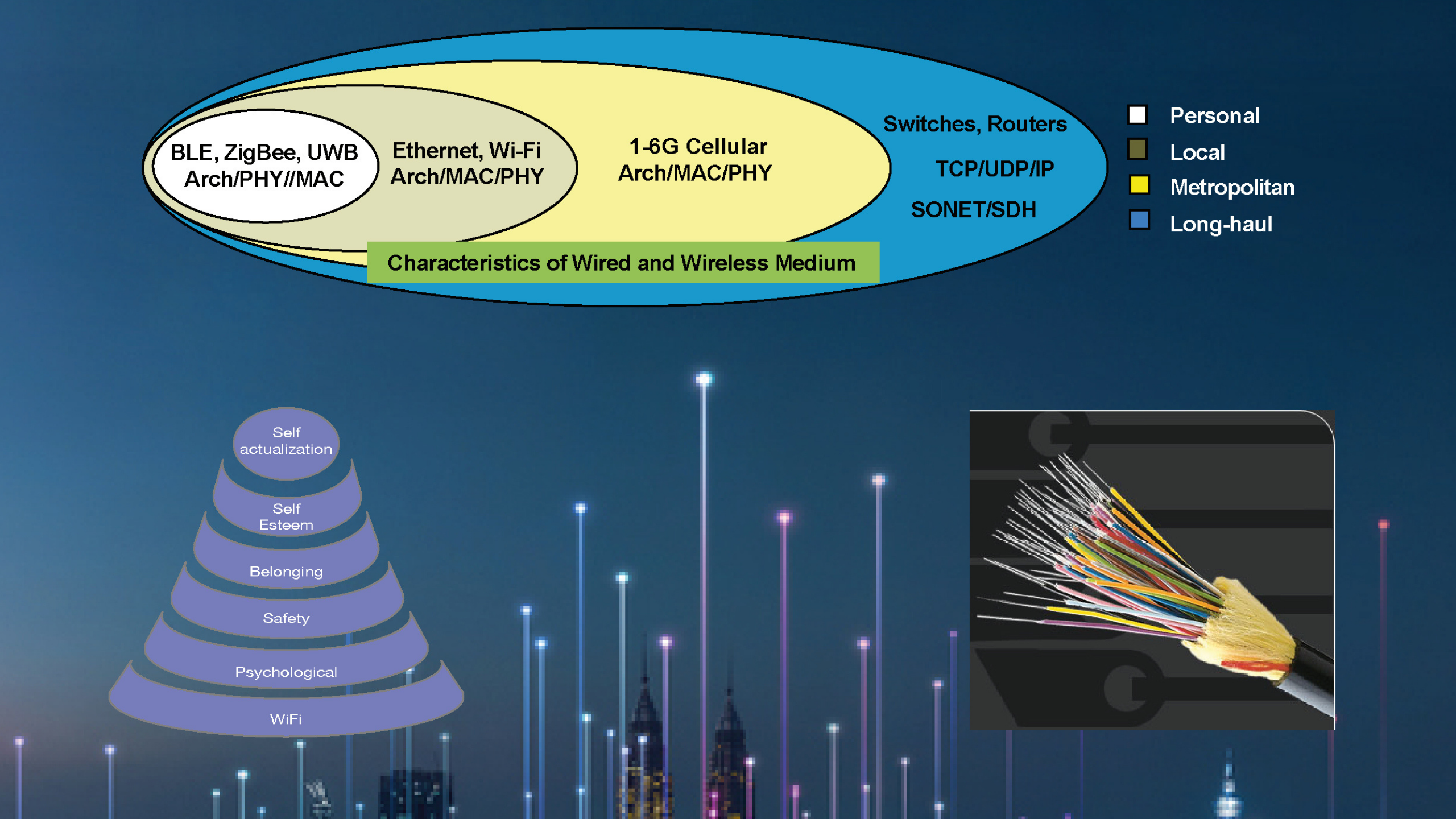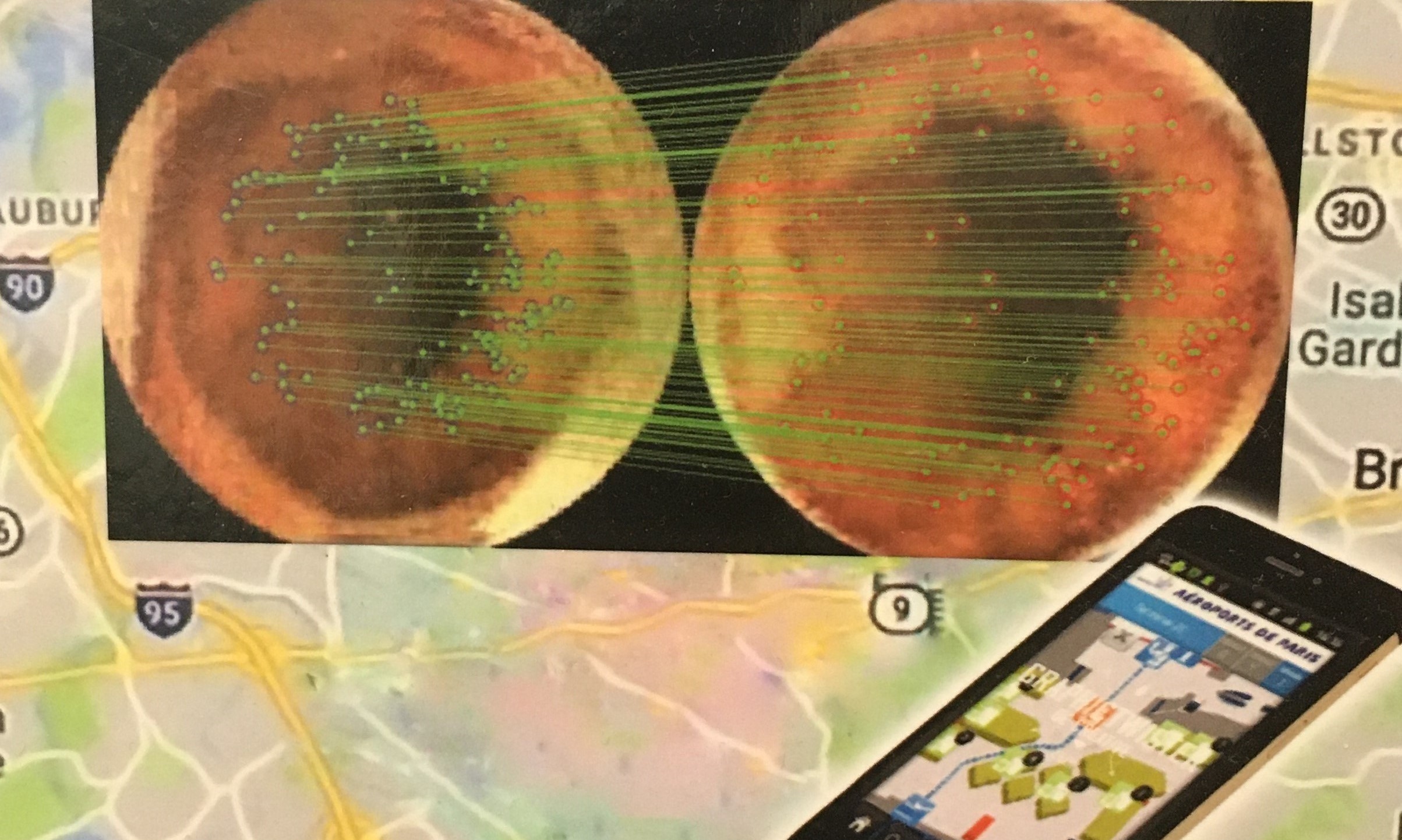Educational Contributions:
Sample Courseware at WPI
“Professorship is a pant with two legs: research and education”
Richard A Gallagher, WPI Provost, 1984-1988
The following courses were sample of courses taught by Professor Pahlavan at the Worcester Polytechnic Institute over the years of his career. Although displayed on this site, they are publicly accessible through Canvas in an effort to disseminate knowledge. They are open to curious minds of all backgrounds. A click on the on the images direct the reader to the WPI Canvas site where details of multimedia presentation of the courses are available to public.
ECE 2305: Introduction to Communications and Networks

This sophomore undergraduate course provides an introduction to the broad area of communications and networking, providing the context and fundamental knowledge appropriate for all electrical and computer engineers, as well as for further study in this area. The course is organized as a systems approach to communications and networking. Topics include key concepts and terminology (delay, loss, throughput, bandwidth, etc.), types of transmission media, addressing, switching, routing, networking principles and
architectures, networking protocols, regulatory and applications issues.
architectures, networking protocols, regulatory and applications issues.
ECE 538: Wireless Technologies and Applications

This second year graduate course provides an overview of evolution of wireless information networking standards and technologies for personal, local and six generations of cellular networks, and the distinct role of Wi-Fi in this evolution. Radio Frequency (RF) cloud from wireless devices and embedded big data in them. Models for the behavior of features of RF signals from wireless devices: The Received Signal Strength (RSS), Time-of- Arrival (TOA), Direction of Arrival (DOA), Channel Impulse Response (CIR), and Channel State Information (CSI). Application of models for features of RF signal for design and performance evaluation of mainstream wireless communication technologies: Spread Spectrum, Orthogonal Frequency Division Multiplexing (OFDM), Multiple-Input-Multiple-Output (MIMO) antenna systems, Ultra-Wideband (UWB) and millimeter wave (mmWave) technologies. RSS and TOA features of RF fingerprints of wireless devices for opportunistic positioning and tracking using Wi-Fi and cellular signals. Application of Artificial Intelligent (AI) algorithms and RSS, CIR, and CSI fingerprints of wireless devices to motion and gesture detection, as well as authentication and security. Intelligent spectrum management and regulations and future directions of wireless networks.
ECE 5307: Indoor Geolocation Science and Technology

Precise and accurate localization in indoor areas is one of the fundamental scientific and engineering technologies for cyberspace applications to enable the emergence of Smart World and the Internet of Things (IoT). This course covers fundamentals of the evolving indoor geolocation science and technology applied to cyberspace applications. Material taught in the course are beneficial for graduate students in the Electrical and Computer Engineering, Robotics Engineering, Biomedical Engineering, Computer Science or other disciplines with current research related to localization applications. Fundamentals of received signal strength (RSS) and Time- and Direction-of-arrival (TOA/DOA) based localization techniques. Applications, systems, effects of environment, performance bounds and algorithms. Opportunistic positioning using cellular, ultra-wideband (UWB), WiFi, Bluetooth and ZigBee signals, as well as data from mechanical sensors used in different smart phone and Robotic platforms. Analysis of the effects of multipath in different environments on precision of the positioning techniques. Performance evaluation of different technologies using Cramer Rao Lower Bound (CRLB). Fingerprinting and pattern recognition algorithms for RSS-based localization. Super-resolution and cooperative positioning algorithms for TOA-based positioning in multipath indoor areas. Kalman and Particle filtering techniques for hybrid localization.